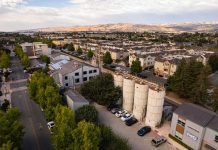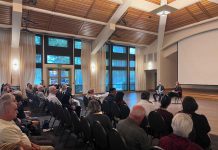On Feb. 14 – Valentine’s Day – Gov. Arnold Schwarzenegger appointed me to the nine-member California Transportation Commission, a four-year term of part-time citizen service that began on March 1. Appropriately, I view this as a labor of love.
With transportation and traffic congestion cited as the foremost frustration of Bay Area residents for 30 of the past 32 years, the appointment is incredibly important to our region and state. Yet in the 30-plus year history of the commission, there has only been one other person from Silicon Valley to serve, and that four-year term ended several years ago.
I’m honored and humbled to serve our state in this way, and eager to get started. Yet I learned a lesson long ago, stated succinctly in the following four words: “Listen, learn – then lead.” With this in mind, over the next 90 days I will be traveling to 12 counties throughout the Bay Area and beyond – home to seven million people – to seek your insights and ideas.
Specifically, in sessions open to the public, I have asked the boards of supervisors, transportation agencies and transit districts in counties from as far south as Monterey and San Benito to as far north as Napa and Sonoma, to share their views on four key issues:
- What are your region’s top traffic concerns?
-
What are your top road safety issues?
-
What are your key priorities when it comes to options to the automobile?
-
How are you leveraging limited state transportation funds?
The lens through which I view transportation investments is simple and straightforward:
- Leverage every taxpayer dollar – Yes, with incredible leadership by Schwarzenegger and the bi-partisan support of the State Legislature, California voters had the vision to approve nearly $20 billion in transportation bonds last November. Yet the state’s highest priority road and transit improvements over just the next ten years totals $160 billion. The shortfall doesn’t even include local street and road needs or longer term statewide priorities. Locally, “self-help counties,” whose voters have enacted sales tax measures for specific transportation improvements as we have done three times in Santa Clara County, must continue to be rewarded with matching funds to recognize our local commitment. The state bond includes $1 billion for state/local partnerships – a wise investment that rewards the commitment of county residents that already contribute local dollars.
-
De-congest our roadways – Traffic relief must be a key priority. Transportation dollars have a dual benefit – they put Californians to work, building and improving the transportation system, which helps other Californians get to work. Recently, the California Transportation Commission allocated $4.5 billion to fix some key traffic tie-ups. Much more must be done. The Highway 280/880 Interchange near Valley Fair in San Jose is an auto-mall-sized monument to the mountain of projects that still need funding throughout the state.
-
Saving time and saving lives – While traffic relief is a top priority, saving lives is vital. In the 1940’s, my mom and her family moved from Oklahoma to San Jose in search of a better llife. Their trip included the trecherous Pacheco Pass, Highway 152, linking the Central Valley with what is now Silicon Valley. Six decades later, too many Californians still risk or even lose their lives on this dangerous stretch of road.
A more recent example is Highway 9, a state-owned stretch of road between Los Gatos, Monte Sereno and Saratoga. Over the past few years, numerous accidents between motorists and cyclists or pedestrians have led to serious injuries and needless loss of life. Regardless of who is at fault in each situation, when a car and a cyclist or pedestrian crash, it means a dent to the car, but often death to the person on foot or on bike. In both examples, Highway 152 and Highway 9, we cannot forget that relieving traffic saves time. Addressing safety issues saves lives.
- Options to the automobile – Whether we are motivated by traffic relief, improving air quality, or curbing greenhouse gases and our overdependence on oil, we need to invest in alternatives to solo-vehicle driving. This includes heavy rail like BART and
Caltrain, light rail, express buses and buses. It also includes cost-effective programs and public-private partnerships for carpools and vanpools, and increasing the safety and capacity for pedestrian and bicycling paths and lanes.
Carl Guardino is CEO of the Silicon Valley Leadership Group (svlg.net), an organization of 210 of the Valley’s top employers.







